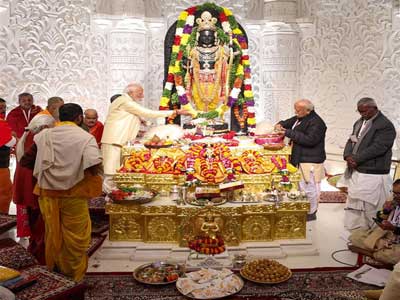What will Agra look like in the ‘Viksit Bharat’ of 2047? Will the city of the Taj Mahal and other historic monuments rise as one of India’s top five smart cities, or will it crumble into a dystopian nightmare, buried under urban chaos and neglect? Through the lens of a time machine, we take a haunting glimpse into the future. A report…
"It’s a scorching Monday afternoon in 2047. I land on the Delhi-Agra highway. From Sikandra to the Taj Mahal, the streets are a grim reflection of decay. Dusty, littered roads are flanked by crumbling buildings. Buses belch black smoke, filling the air with a foul stench.
Read in Hindi: कुछ यूं हुई टाइम मशीन से ‘आगरा 2047’ की सैर...
At the Hari Parbat crossing, traffic cops hand out masks and inhalers to combat the toxic air. By the time we reach Raja ki Mandi, we’re directed to an oxygen booth to fill our lungs with fresh air. The June heat is unbearable, and we seek refuge in a restaurant, only to find it dark and reeking due to a power outage. The streets are suffocating, and crowded with honking vehicles, and the noise is deafening. The metro services, once a beacon of hope, were shut down long ago, deemed unaffordable for the average commuter. The medical college stands half-abandoned, its halls overrun by chaos.
The civic infrastructure has collapsed under relentless pressure. The Yamuna River, once a lifeline, is now a stagnant, polluted trickle, its banks overtaken by slums, and colonies mushroom on the river bed. The so-called ‘Smart City’ has devolved into a chaotic sprawl, a victim of unplanned urbanization. College campuses are eerily empty, as students, glued to their devices, find no need for classrooms in a world where AI does all the thinking.
A heavy haze of pollution hangs over Agra, shrouding the once-majestic Taj Mahal. The air is thick with toxins, choking the life out of the city. The Yamuna, now a graveyard of industrial waste, is a far cry from the vibrant river it once was. Community ponds and canal network, once bustling with life, are now overrun with slums, a grim testament to failed urban planning.
The streets are a chaotic mess. Dilapidated buildings crumble under the weight of neglect, their facades scarred with grime. Markets, once lively and colorful, are now ghostly shadows of their former selves. Shops stand abandoned, their silence broken only by the groaning engines of decaying vehicles navigating pothole-ridden roads.
The promise of ‘Viksit Bharat’ has turned to dust in Agra. The Smart City projects, once hailed as saviors, now stand as hollow monuments to failed ambition. Beautification efforts, meant to mask deeper issues, have faded into oblivion. The Taj Mahal, once a symbol of eternal love, bears the scars of acid rain and neglect. Tourists, repelled by the city’s squalor, have vanished, leaving the local economy in ruins. AI arranges virtual tourism from the comforts of hotel rooms.
The young have fled, seeking opportunities in cities that offer hope. Only the old, the sick, and the destitute remain, trapped in a city that has abandoned them. Educational institutions, once the pride of Agra, are deserted, their libraries gathering dust. The city’s vibrant culture has withered, replaced by despair. I stop over in the Shah Jahan Garden to absorb shocks.
Really, Agra 2047 is a cautionary tale, a stark reminder of what happens when urban problems are ignored, when short-term fixes take precedence over long-term solutions, and when greed and apathy overshadow vision and compassion. It is a city that has lost its way, a city that has sacrificed its future for fleeting gains. It stands as a chilling testament to the devastating consequences of unchecked urban decay.
Alarmed and shaken, we decide to return to the present. But the haunting vision of Agra’s potential downfall lingers. Will we act now to save our beloved city, or will we let it slip into ruin? The choice is ours.


















Related Items
Indian scientists helped rewrite a 50-year-old biological rule
Will caste and religious walls collapse in Bihar this time…?
India stuck in traffic; Cities halt, Horns holler, and time takes a nap